The collar is a piece of fabric that frames the neck. It is part of certain types of clothing - blouses and shirts, dresses, jumpers, jackets, coats and raincoats. It not only has a functional role, but also acts as an accessory designed to give the product a finished look, to help create a complete image.
In women's dresses and blouses, various types of collars help to give the appearance the necessary severity or, on the contrary, create the appearance of lightness and ease.
Types of collar shapes on women's dresses, fashion trends
A collar is a separately sewn detail or unit of a knitted or sewn garment that frames the neckline. In addition to solid collars and collars sewn directly to the neckline, there are also overhead options that allow you to change the appearance of the garment.

Collars play not only an aesthetic but also an important functional role. - they are a kind of barrier and protect the skin of the neck and décolleté from the aggressive effects of the external environment (wind, sun). The harmonious look of the overall product will depend on how competently and successfully the collar is modeled in the product.
Fashion historians believe that the collar, as a separate detail framing the neck, first appeared in the 13th century. In Russia, the fashion for collars came during the reign of Peter I, who became famous for actively adopting advanced European development experience in many areas.
The current gradation of collars by type arose as a result of the development of mass sewing production.
The types of collars of women's dresses, which will be considered in the article, are very diverse. With the help of this detail, it is possible to give the image completeness, to emphasize the beauty of the neck, shoulders and décolleté.
If we consider collars from the point of view of their connection to the neck, we can divide them into 2 large groups - one-piece and set-in. This is a general basic division and the names themselves make clear the principle by which collars are joined to finished products - they are either separately sewn to the neck (set-in) or cut from fabric as a whole.
Also, almost all collars consist of 2 main parts - a visible zone or a flight and an invisible one or a stand.
Standing
Stand-up collars give dresses and other items a strict and laconic look. Most often, this type of collar is found in outerwear models - jackets, windbreakers, raincoats, coats, sheepskin coats, as it perfectly protects from adverse natural phenomena (wind, rain). The same material is usually used to sew such a collar as for the main item.
There are several variations of this type of collar:
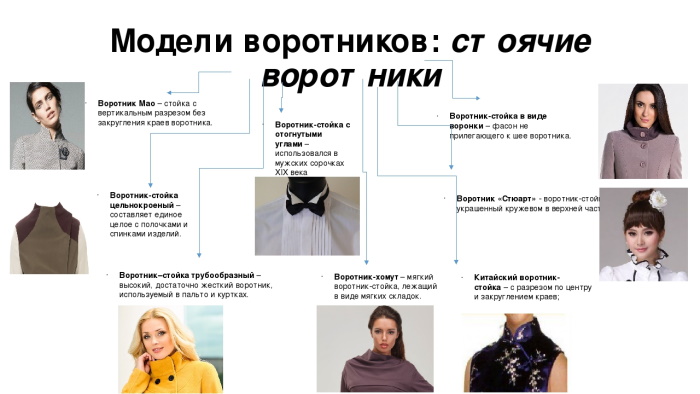
| High stand-up collar or turtleneck (this type of sweater is also called a turtleneck) | A collar of this type looks like a tube that completely covers the neck. It can be double or single. Most often, the neck is framed in this way in knitted tunic dresses and sweaters. |
| Straight shirt-type collar | This collar looks like a shirt collar and is therefore present in models of dresses of this type. Its peculiarity is that it does not have a lapel and does not cover the neck completely. |
| Mandarin collar | Similar to the straight collar type, but has rounder edges. More often used in oriental style clothing, such as kimono dresses. |
| Ascot collar | This is a stand-up collar with elongated ends that can be tied in the form of a bow or a tie. A very romantic type of collar that will add zest and uniqueness to any dress. The free ends can be narrow or wide, long or short, depending on the designer's idea. The name of the collar comes from the settlement of Ascot, located in London, where this accessory was worn at the royal races. |
| Cadet collar | It is found in sportswear (jackets, tracksuits, tracksuits, women's sports-type dresses) with a zipper. If the zipper is not fastened all the way, the collar looks like a turn-down collar. |
Stand-up and turn-down
Unlike the previous type, they have not only a stand, but also a fly, which is clear from the name itself. This model is sewn on and is present on such clothes as dresses, shirts, blouses.
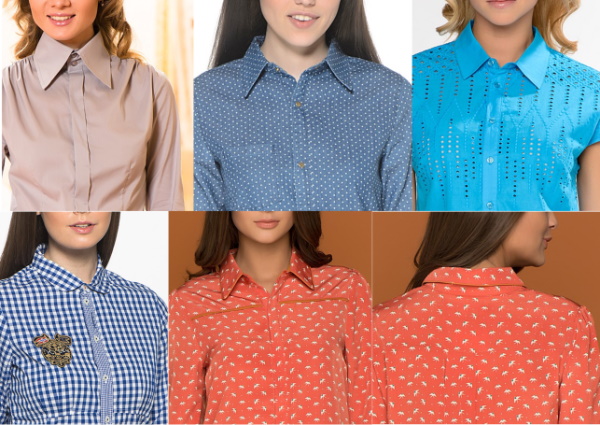
There are 2 types of stand-up collars:
- a rigid shirt collar - it usually has a peak with pointed edges and is used when sewing clothes in a classic, strict style;
- soft polo collar - it has the same shape as a hard lapel, but is made of soft knitted fabric and, as a rule, is complemented by buttons or a fastener.
One-piece
Types of collars for women's dresses can be not only set-in (cut out separately and sewn onto the workpiece), but also one-piece. Such collars are cut out in one piece from one piece of material together with the main part of the garment. This is usually done when the collar is not very large.
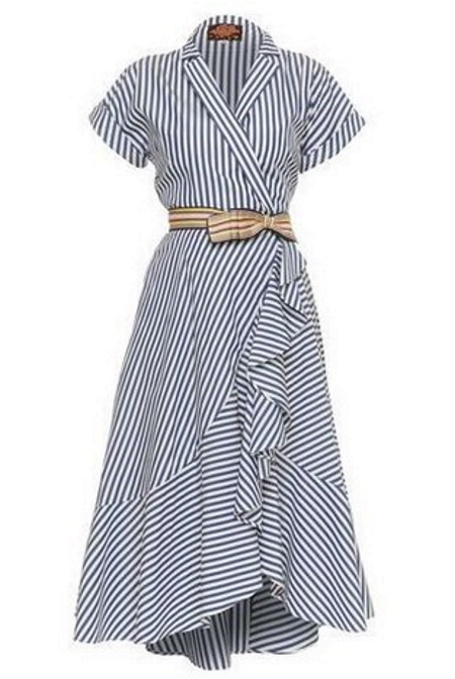
One-piece collars can be:
- turn-down;
- in the form of a pipe;
- in the form of a clamp.
Jacket type
Dresses sewn in an office or business style often have a jacket-type lapel. This type of neckline design allows you to add severity and a certain formality to your look.
There are also looser models of dresses with jacket-type collars that reveal the décolleté and neck, which are not intended for wearing to the office, but for going out – to visit, to the theater, cinema, or restaurant.
The design feature of this model is that it consists of 2 parts - a turn-down sewn-in element (collar) and lapels (turn-downs). To ensure greater stability of the element and improve the appearance (better fit), collars of this type can be additionally reinforced with special materials (hemmed dense fabric).
The main types of jacket collars are:
- English type – is a stand-up, turn-down design with stepped edges and turn-down lapels. It is most often used in women's and men's jackets and blazers;

- apache collar - an interesting variant of the jacket collar type, which is a wide collar with folded edges, which are most often asymmetrical (one lapel covers the other). This type of collar can be seen on women's raincoats and coats, as well as formal dresses;
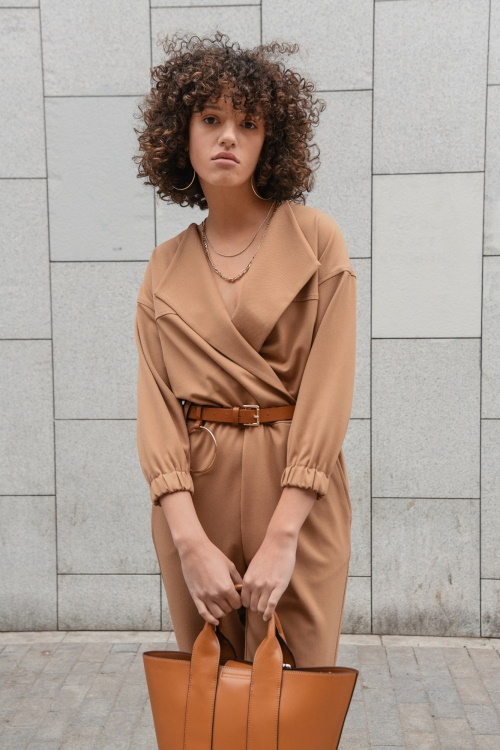
- "shawl" or shawl collar - is a turn-down collar that gradually tapers toward the neckline. It looks like a shawl that covers the shoulders and back and is gathered in front along the body, so that a triangle is formed in the chest area.
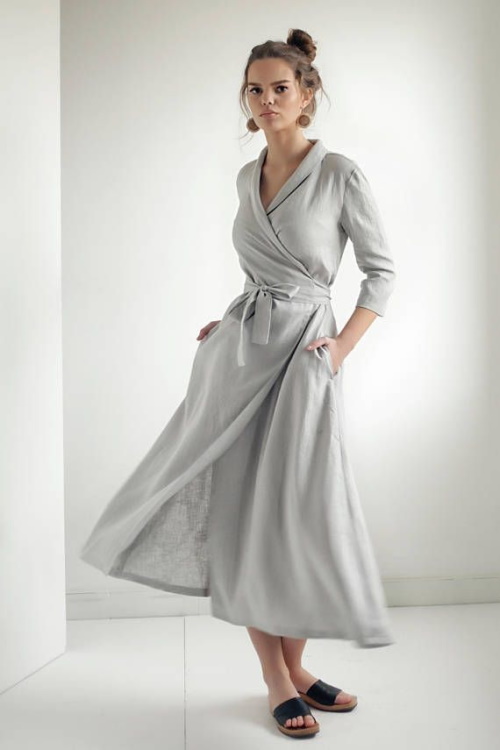
The model is used for sewing women's coats, jackets and dressing gowns for the home, as well as romantic wrap dresses in a traditional style.
Modified and fantasy
The types of collars for women's dresses are not limited to classic options. Modern fashion offers many original fantasy and modified details of lapels for all clothing and for dresses in particular.
They help to create a bright and extraordinary image. For sewing such collars, silk, satin fabric, openwork, various decorative elements are used - rhinestones, flounces, ribbons, stones.

The most interesting and popular options for such collars are:
- coquille - the neckline trim is cut out in the form of a flounce, circle or semicircle or a strip in a spiral and then sewn onto the garment. It cannot be said that this element is very relevant today, but it can still be found on some models of satin and silk dresses, as well as shirts and blouses;
- bow - can be tied both in the front and in the back, giving the image a flirty look (especially in combination with a cutout on the back or a deep neckline). The collar itself is a strip-yoke, sewn on a section in the center of its length to the neck with free ends left to form the bow itself;
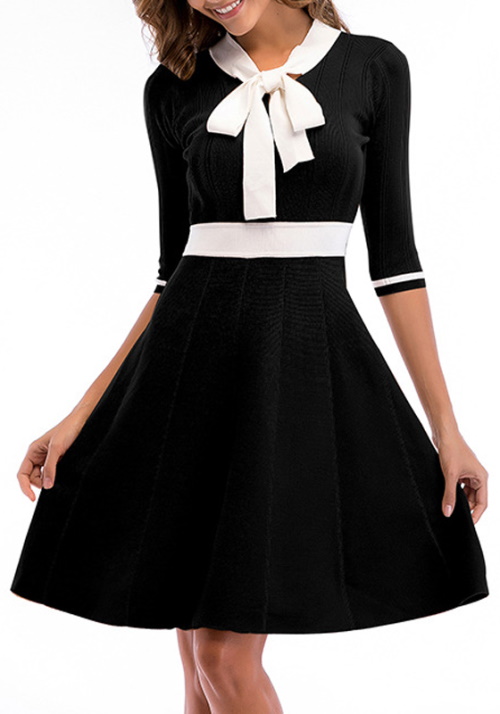
- frill – is found on various models of dresses more often than the two previous options. It is a flounce or frill gathered on the chest from fabric, which descend in a certain way from the neck (neck) to the chest.
The frill first appeared in European costume around the 17th century and in translation from French this word means “bird’s crop” due to the similarity of the lush folds of the collar with the protruding chest of most birds.
The jabot has many variations, can be very small or quite voluminous and perfectly refreshes any dress model, giving it femininity and charm.
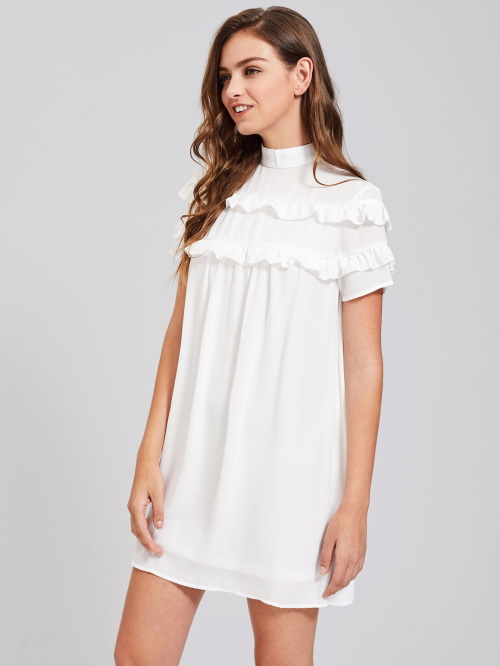
For some closed theme parties, creating stage images when sewing dresses, collar models of old fashion can be used - stand-up collars with lace frills, capes.
The well-known hood is also a modified version of the collar. Its presence allows you to make outerwear comfortable and practical, as this element will always help to hide from adverse natural phenomena. The hood can be present in some models of women's dresses in a sporty or casual style.
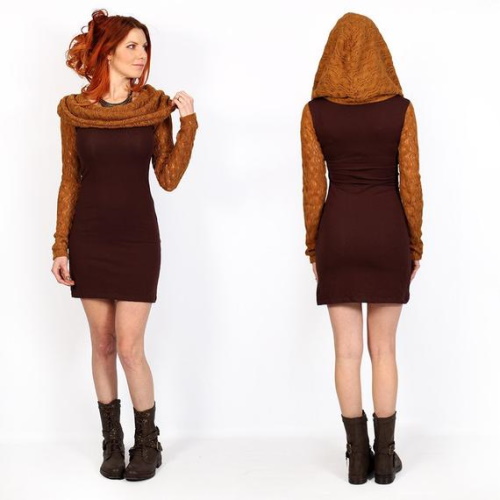
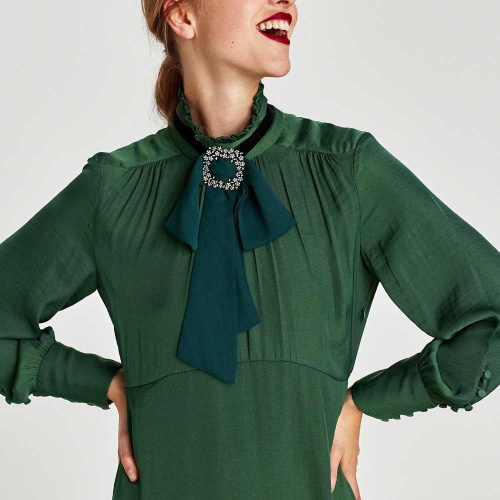
Modified collars also include items with unusual decoration, for the creation of which various unusual stripes, stones, rhinestones, lace are used. More often, such decorations of lapels are found in the design of evening dresses.
Sewn into the neck
All collars that were not cut out as a whole from a single piece of material together with the main part of the dress or other product will be considered sewn into the neckline. Lapels of any shape can be sewn into the neckline of dresses - stand-up, stand-up and turn-down, fantasy, flat.
It is best for beginners to practice sewing skills and gain experience by practicing sewing in stand-up and stand-up collars. The main feature of all sewn-on collars is that the border of the element attachment should repeat the contour of the neckline of the front and back of the product.
"Peter Pan"
The name of the Peter Pan collar is associated with the hero of the play of the same name based on the book by James Barrie - a boy who did not want to grow up and who wore shirts with collars with semi-rounded loose edges.
The cut of this character's shirt collar was so popular with fashionistas that it began to be actively used in both everyday clothes and evening outfits. The Peter Pan collar model is universal and can be present in both adult and children's wardrobes.
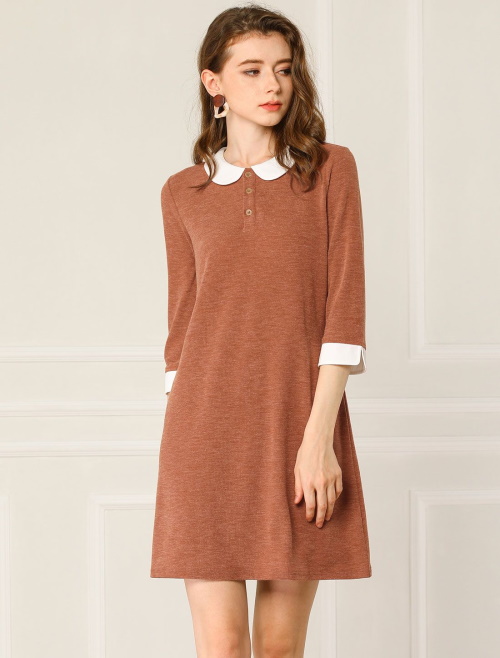
The element itself is a flat-lying accessory with semi-rounded lapels. There are many variations of this type of lapel, which allow you to give dresses, blouses and shirts a cute, slightly childish look and at the same time a romantic look.
With lapels
Lapels are the openings on the chest that are part of a jacket-type collar and extend to the top buttons. They give clothes, especially women's dresses, a more formal look and are ideal for items made in a formal, office style.
With buttons
Women's shirts and dresses with button-down collars are borrowed from men's wardrobes.
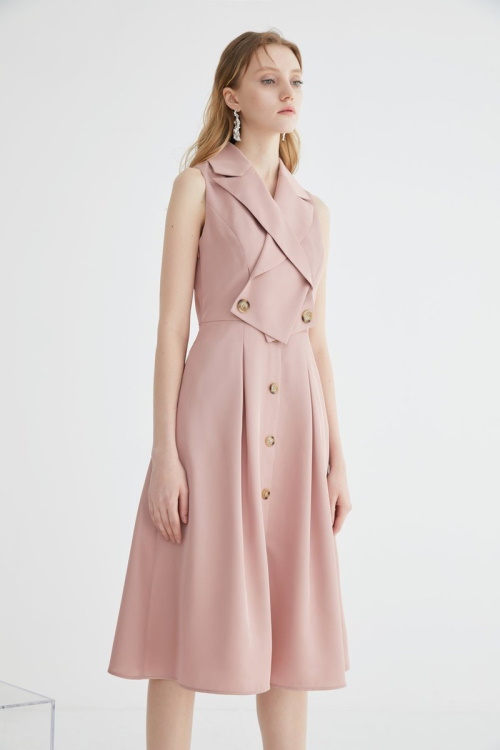
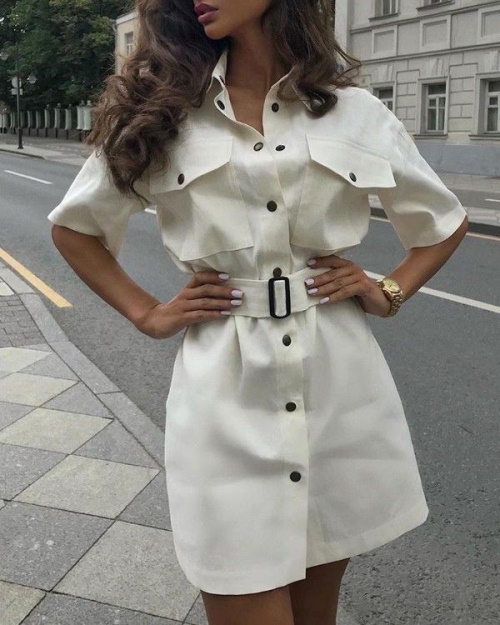
This type of raven collar is ideal for an informal dress code. Unlike a simple collar, it has slits on the corners through which it is fastened with buttons to the main part of the top of the product. A regular collar "holds" itself due to a rigid base.
This neckline trim was invented by polo players., who were forced to fasten it so that it would not interfere during the gameplay. In general, the model is considered semi-formal and men do not wear a tie under it.
A women's dress with such a neckline trim is suitable for visiting an office where there are no strict requirements for clothing style, as well as for active walks.
Polo
A T-shirt or polo jumper is a very popular model not only in men's wardrobe, but also in women's. The neckline of these items is decorated with a stand-up collar., which is connected to a short placket (it can be zipped or buttoned).
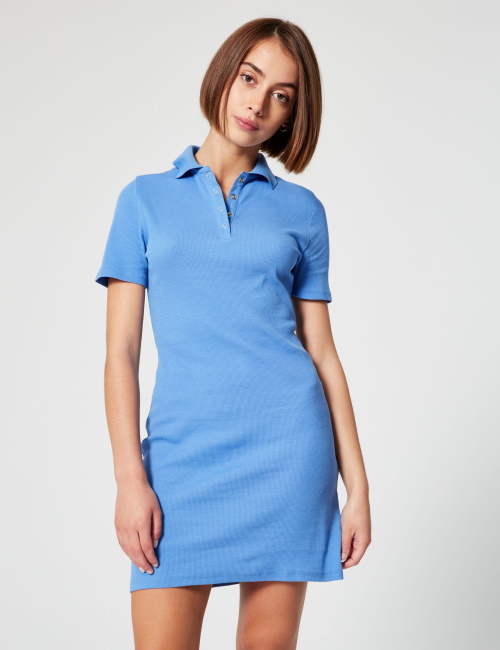
In general, a polo jumper looks like a shirt and therefore many establishments allow wearing such clothes as business attire. Women's polo dresses can also be worn to work if they are made from fabrics in subdued tones (gray, blue, black, dark green).
In addition, sports dresses with polo collars are very popular among the fair sex involved in tennis, volleyball, and handball.
Jack
This is the so-called "sailor" collar, which was borrowed by stylists from the sailors' uniform. The collar is original and is a type of flat-lying lapel. The element is often removable.
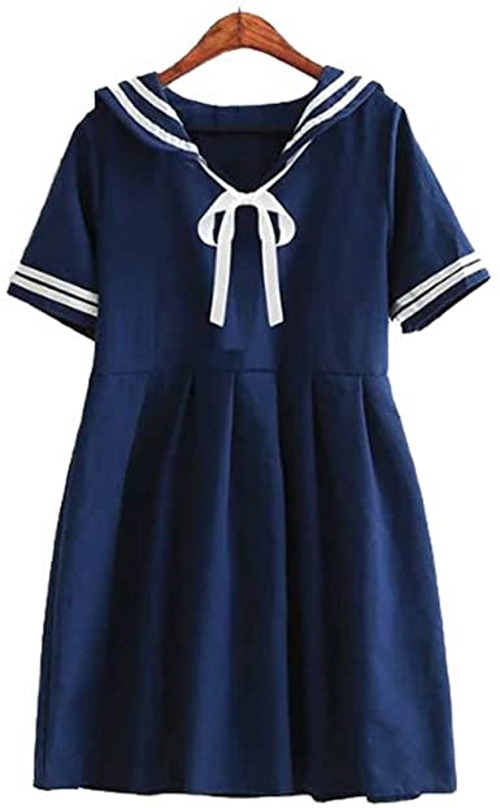
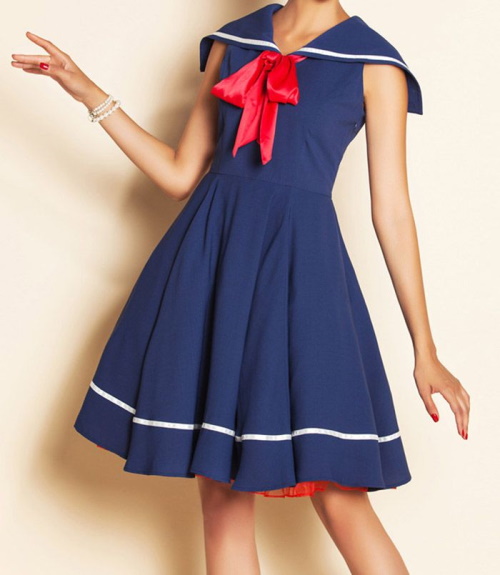
In the classic version, the collar is sewn from dark blue cotton fabric, while the lining and outer fabric should be the same. Along the edges of the collar are 3 white stripes that repeat the contour of the accessory.
The front of the collar has a V-shaped neckline and loops for fastening or a tie, and the back looks like a square covering the shoulders and almost reaching the shoulder blades (it can be a little longer or shorter).
The model is often used in women's wardrobes for sewing clothes in a nautical style:
- dresses;
- blouse;
- T-shirts.
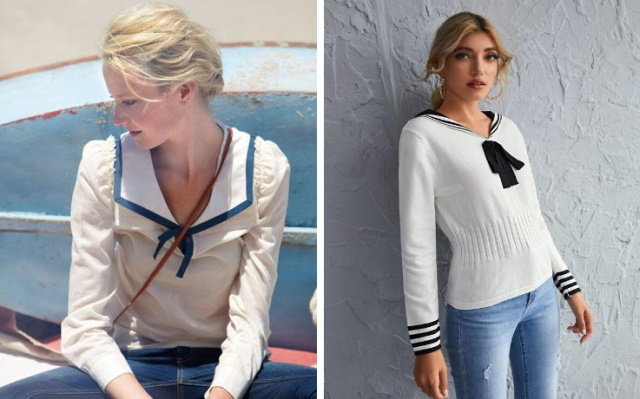
Thanks to such a collar, the image looks light, casual, and playful. Dresses with any color variations of the guis collar are great for sea walks, picnics, and photo shoots.
Nuances of design and finishing depending on the material
When sewing clothes with a collar, in particular women's dresses, some features of fabrics should be taken into account:
- cotton holds its shape well and is therefore suitable for creating turn-down and stand-up collars;
- knitwear it stretches well and without lining, it is most often used to sew flat collars, but to create more rigid structures, lining material is used;
- staple is softer to the touch than cotton and jersey and is therefore suitable for sewing Peter Pan collars, jabots, and coquelles;

- cambric, chiffon and guipure fabrics very thin and therefore ideal for creating fancy collars, although these materials can also be used to sew stand-up collars and stand-up collars using lining fabric.
Detachable collar as a fashion accessory
There are many types of collars for shirts, blouses and women's dresses. In addition to the listed options, there is also a separate type of collar, which is also a kind of accessory. We are talking about false or removable collars. They can be worn as a separate decoration in a set with dresses, blouses.
Such collars can be made from a variety of materials.
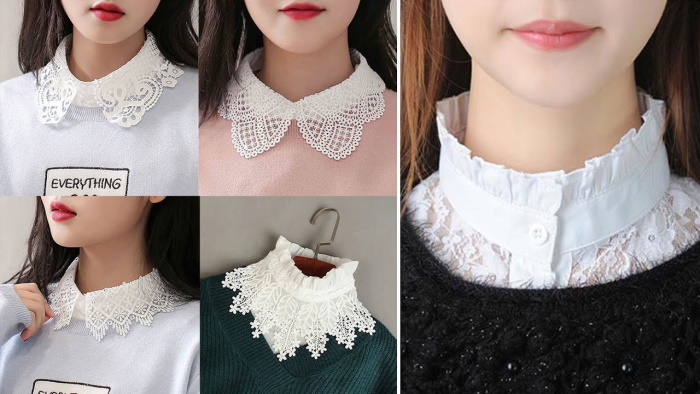
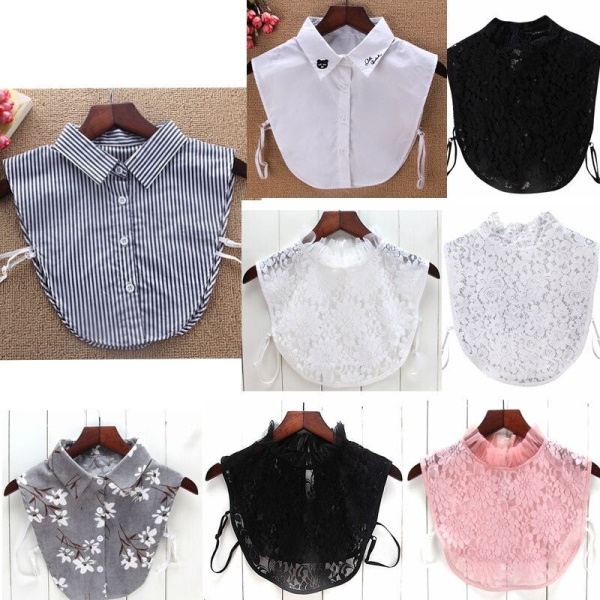
They are:
- openwork;
- knitted;
- leather;
- fabric.
They can be decorated with glitter, rhinestones, and spikes. The decor of detachable collars can be very unusual and some of them look like expensive necklaces.
Simpler collars can be used to decorate dresses, blouses, sweaters and shirts on a daily basis. Bright and contrasting false collars are more appropriate to wear with evening dresses when going out.
When choosing detachable collars, you should take into account the shape of the neck of the garment and select it so that they match each other, since, for example, a round product will not fit a square or V-shaped neckline.
A collar can give women's dresses and other clothing both a strict and a flirty look. The existing types of neckline design are striking in their diversity, which allows the fair sex to experiment and choose the most comfortable and beautiful options for themselves.
Video about collars
Types of collars for women's dresses:
